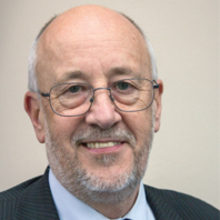From the President
Issue: Zoonotic diseases
05 November 2015 article

This is my last column in Microbiology Today as your President, and I have been reflecting on what the Society has achieved over the last three years. Our future is in the hands of the new President, together with the refreshed Council, Committees and Divisions, and I am delighted to hand the non-existent presidential chain-of-office to Professor Neil Gow. I know that Neil will work with the best interests of the Society at heart and will further develop our strategic aims and direction.
My first column in November 2012 identified some of the changes that the Society was proposing in publishing and in our web presence, and the changes that had just occurred in Committee structure to address the 2012–2017 Strategic Plan. I flagged the importance of ensuring equality and diversity, one of several actions continued from Hilary Lappin-Scott’s presidency. I also mentioned how raising awareness of microbiological issues to policy-makers was an important role for the Society and I proposed that we engaged more with government and public bodies.
Of course, things have moved on considerably since then. In publishing we now have two new journals – JMM Case Reports and Microbial Genomics – and a new journals platform. We are happily ensconced in London with our sister societies, with many new staff working in a new internal structure under a new Chief Executive. We have just opened a second building in London which can be used for conferences and meetings and we have changed our conference structure from two full Meetings a year to an Annual Conference and a series of Focused Meetings. In addition, our engagement with other learned societies, research councils, government departments, policy-makers and opinion-formers has increased considerably since our relocation to London.
I am pleased that we now have much better and more transparent communication with the membership, and that our membership is increasing. The role of the Society’s Champions has been important in developing our member engagement, and I thank them for their work. However, there is still some way to go in enlarging our membership beyond academic molecular and cell microbiologists to embrace other aspects of academic, clinical and industrial microbiology.
We also need to engage with early career microbiologists better in all our activities, not just in attendance at meetings. They are the future of microbiology and of the Society, and I know that Neil Gow sees this as a priority for the immediate future. I am pleased to be able to help in this work when I become a member of the Professional Development Committee from 1 January.
Of course, one of the biggest changes that has affected the Society in the last three years is our change of name. At our AGM in September it was agreed that we should become the Microbiology Society. I applaud the forward vision of our staff who ensured that we had captured the web and email addresses relevant to a change of name and who made sure that the logo adopted during our rebranding could be modified very simply to accommodate a name change.
Some progress is rapid and some is more hesitant. Fast or slow, the different activities of the Society are moving forward in line with our vision and mission as embodied in the Strategic Plan. For that I would like to thank the current and past members of Council, Committees and Divisions and our excellent and dedicated staff, all of whom work hard to realise the Society’s objective “to advance the art and science of microbiology”.
NIGEL BROWN
President
[email protected]
